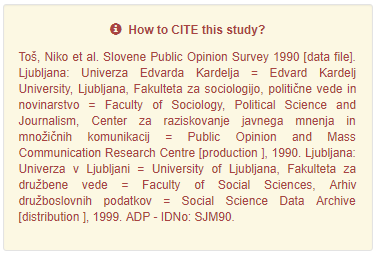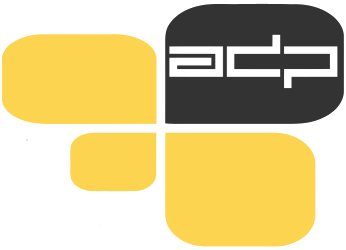IV. Publishing and Sharing
Datum objave: 08. 04. 2017 Datum zadnjega pregleda: 08. 04. 2017
Kako citiram to stran?
Arhiv družboslovnih podatkov. 2023. IV. Publishing and Sharing. Dostopano prek: http://adp.fdv.uni-lj.si/eng/usposobi/zkg/objava/ (DD. mesec leto).
The phase of publishing and sharing includes:
- resolution of copyright
- preparation of metadata for »searching« and documentation for users
- publication and sharing of data (possibly in a data centre)
- control over data access
- promotion of data

Research Data Management Planning
Laurence Horton, ADP course for doctoral students, Ljubljana 2015
Managing Copyright and Access
The main question that needs to be resolved before data publication or study results publication is the question of copyright and intellectual property. The researcher needs to answer the following questions:
- Who is the owner of the data?
- Which license to put on data to enable further use?
- Should there be limitations put on reuse of data from third parties?
- Should there be an embargo put on data access, for example, due to patent or article publication?
Creative Commons offers data producers pre-prepared licenses that clearly define allowed and unallowed use of publications. In this way, the published works can freely circulate amongst users. Putting a Creative Commons (CC) license to your publication does not mean you are giving up your copyright, you are only agreeing on whether to give access to your publication to everyone or under certain conditions.
Types of Licences
Appropriate licenses for research data publication are CC-BY, CC-BY-NC, and CC0.
The decision on where to submit your study and what kind of access level you will grant to your research data is best to accept during the data management planning phase. It is advisable to approach the selected data centre at the beginning of your project and arrange the conditions for ingest at the beginning. Some of the funders already demand that the researcher needs to define where to submit the study at the end of the project in their data management plan. Some disciplinary funders define an appropriate place od deposit for the projects financed by them also in their policies. It is a common practice that such a facility is the national disciplinary data centre, such as the ADP in Slovenia for the social sciences.
When choosing the appropriate data centre for submitting your research data, you need to check the demands of the data centre for ingest. You need to also weight the benefits of putting your data in a certain place. Be attentive of the following in your decision:
- What is the mission of the data centre? What are its designated communities?
- What types of data does the data centre accept?
- Does it actively care for long-term digital preservation and access to its target users?
- What are the criteria and how is the procedure of selection and ingest of research data defined? What are the demands of technical characteristics?
- How are the ethical and legal demands addressed, concerning the protection of confidentiality and copyright?
In Slovenia, the ADP provides the data centre services for social sciences. You may learn more about the possibilities and the procedure of ingest to ADP in the section Why deposit study? and Procedure of Ingest. In the process of selecting an appropriate data centre the researcher may use the registry of research data repositories re3data.org.
Data publication and promotion
A data centre, such as the ADP, arranges and prepares the submitted research data, together with metadata and accompanying materials for long-term storage. The study is published in the catalogue and made accessible for secondary use. Researchers and other users can get acquainted with the data and its creating in the section »Description of the study«, that accompanies every data publication. They can also get information on terms and ways of accessing data that were determined at the point of ingest.
Along with data centres and archives, the following stakeholders can participate in promoting and exploiting access to research data:
The researchers may:
- include information about a data publication in his/her own bibliographic reports, and list these as evidence of scientific integrity,
- when publishing reports, the researcher can cite his or her data with a full reference in bibliographic reference lists,
- participate in promoting data usage through training when data are complex and difficult to use (e.g. organization of workshops, seminars or conferences covering aspects of working with data).
The research institution may:
- Report statistics about their own data, which are available in data centres, and their use to add into the excellence profile.
- Offer research data management support, stimulate data deposition by acknowledging it as part of scientific career progression.
- Promote data reuse.
The libraries may:
- Provide information about accessioning datasets into a bibliographic system for the purpose of scientific evaluation and resource discovery.
- Provide data citation guidance.
- Provide information on datasets, modes of access and possible use at information literacy training.
- Provide information about linking data with publications and research projects.
The funders may:
- Monitor if data are openly available as specified in the research project contract and advise about possible consequences if not available.
- Assure that properly published research data are acknowledged as a contribution to science in the framework of a national system of scientific evaluation.
- Stimulate the creation of high-quality data and their deposition in open access solutions, introduce sanctions for controlling access.
- Provide conditions for sustainable data infrastructure and services.
- Promote reuse of data in their policies.
Citation
Analyzed data, which are the base of graphs, tables and/or pictures, need to be referenced within the text and also amongst the used resources at the end of the text. Only likewise it is possible to fulfill the demand for transparency and verifiability of research work.
The same goes for cases when the author presents his/her own research findings. The data publication is namely an individual scientific result that is the basis of scientific analysis.
More and more scientific journals suggest authors deposit or publish their research data in an authorized data repository prior to sending their articles for review. By doing so, the authors enable reviewers and readers access to data.
Citation of the data source in a publication should, in general, include the following information:
- the author or authors of research data,
- the title of the study,
- place and year of production,
- the institution, where the data was created,
- place and year of research data published in a data repository,
- the data repository, that stores the data,
- persistent identifier.
The form of citation should adapt to the standard of citation, used by the selected scientific journal.
An example of citation, offered by the ADP:

ZADNJE OBJAVLJENE RAZISKAVE
Družbena integracija ukrajinskih beguncev v Sloveniji, 2023
AKTIVNOSTI ADP
Spletni seminar SPOZNAJ: Podatkovne objave v odprti znanosti
Predstavitev novega učbenika: Odprta učna gradiva z uporabo odprtih raziskovalnih podatkov




